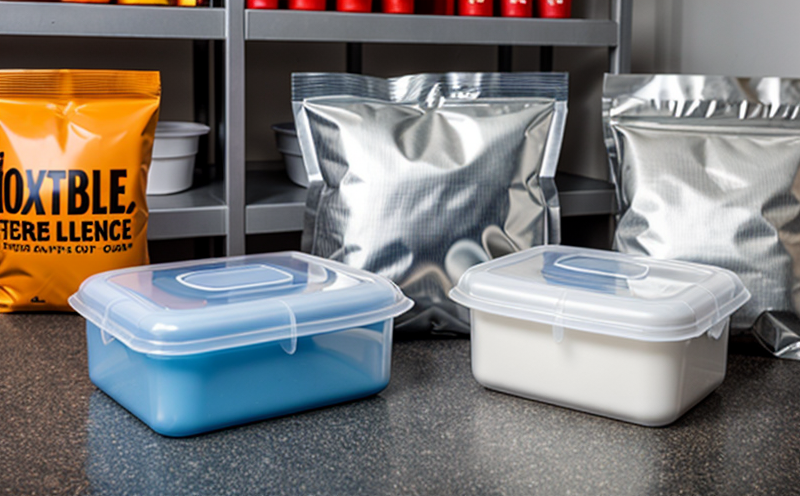ASTM D689-09 Tear Resistance by Elmendorf Method
The ASTM D689-09 test method is a crucial procedure used to evaluate the tear resistance of flexible packaging materials. This standard, developed by ASTM International, is widely recognized for its accuracy and reliability in measuring the resistance of materials to tearing forces.
During this testing process, a sample of the material is clamped between two jaws with a predetermined initial gauge length. The jaws then move apart at a controlled rate until the sample tears. The force required to cause this tear is recorded, and from there, an average tear strength can be calculated.
The Elmendorf method is particularly useful for assessing materials like films, foils, laminates, and other thin sheets that are subject to high stress during packaging operations such as filling or sealing. It helps ensure that the chosen material can withstand the mechanical stresses it will encounter in real-world conditions without compromising integrity.
One of the key advantages of this test is its simplicity and repeatability. The same principle applies across different types of materials, making ASTM D689-09 a versatile tool for quality control and research and development activities within packaging industries.
In addition to tear resistance measurement, understanding how various factors influence the outcome can help improve product design and manufacturing processes. Factors such as temperature, humidity, and specific application requirements must be considered when interpreting results from ASTM D689-09 tests.
Quality managers and compliance officers rely on accurate data provided by ASTM D689-09 to ensure their products meet regulatory standards and customer expectations. For R&D engineers, this test offers valuable insights into material performance under dynamic conditions. Properly conducted tear resistance tests like those specified in ASTM D689-09 contribute significantly towards developing robust packaging solutions.
- Material Suitability: Suitable for films, foils, laminates, and other thin sheets used in flexible packaging.
- Environmental Considerations: Temperature and humidity levels can affect test results; controlled conditions are essential.
- Application Insights: Helps predict how materials will behave during filling or sealing processes.
Industry Applications
The ASTM D689-09 tear resistance test is particularly important in the food packaging industry where ensuring that containers remain intact throughout their lifecycle is critical for maintaining product freshness and safety.
In this sector, flexible packaging materials often undergo rigorous testing to determine if they can withstand the rigors of transportation and storage while protecting the contents from external contaminants. By adhering to ASTM D689-09 standards during production, manufacturers can guarantee that their products meet both internal quality assurance criteria as well as any applicable regulatory requirements.
The pharmaceutical sector also benefits greatly from such testing due to stringent regulations surrounding drug delivery systems and medical device packaging. Ensuring that these packages remain intact until they reach the patient ensures effective treatment outcomes without compromising efficacy or safety.
Why Choose This Test
- Precision: ASTM D689-09 provides precise measurements of tear resistance, which is essential for maintaining product integrity and ensuring customer satisfaction.
- Consistency: The method ensures consistent results across different samples and laboratories, enhancing reliability in quality assurance processes.
- Regulatory Compliance: Meeting ASTM D689-09 standards helps companies comply with industry regulations and standards.
- Innovation Support: Engineers can use test outcomes to innovate new materials or improve existing ones, leading to better-performing products.
- Cost Efficiency: By identifying potential issues early in the development stage, companies save on costly rework and recalls later down the line.
Customer Impact and Satisfaction
By adhering to ASTM D689-09 tear resistance testing protocols, packaging manufacturers enhance their reputation for delivering high-quality products. This not only builds trust with customers but also fosters long-term relationships based on reliability and satisfaction.
Customers benefit directly from improved product performance and durability when they choose brands that demonstrate commitment to rigorous quality control measures like those specified in ASTM D689-09. Such practices translate into reduced waste, lower environmental impact, and ultimately higher customer loyalty.





